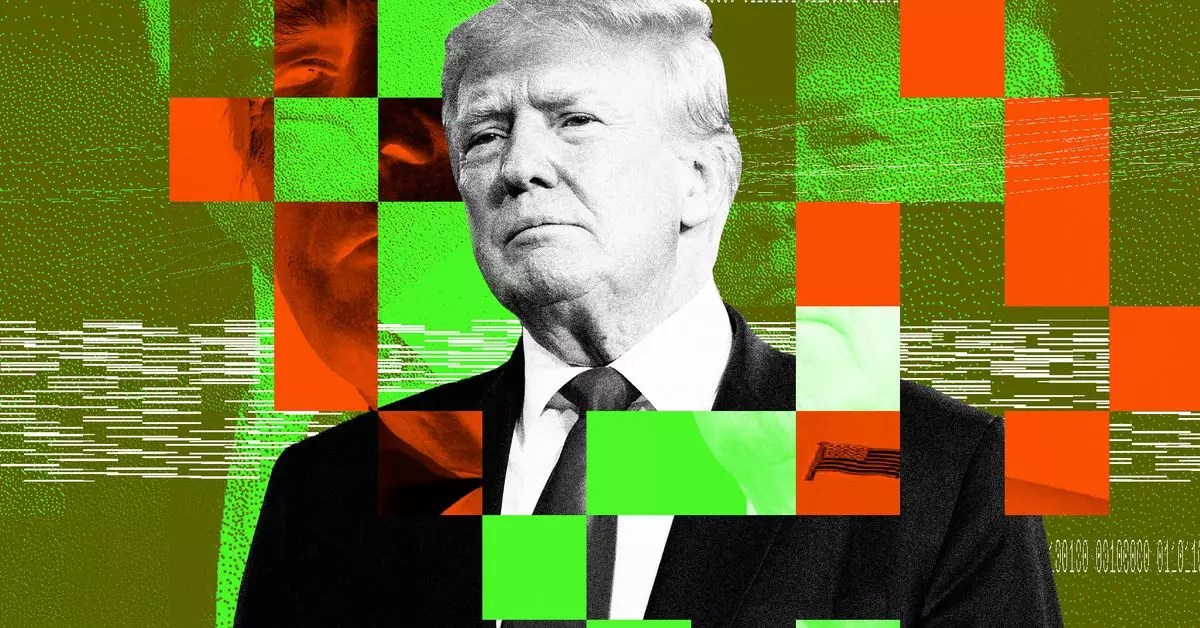The world of cryptocurrencies is brimming with innovation, potential, and often, a cloud of ambiguity. Enter World Liberty Financial, a venture tied closely to prominent figures, including former President Donald Trump and his sons. Their engagement in the cryptocurrency space has sparked significant anticipation and a slew of promises aimed at revolutionizing how the average American interacts with finance. Yet, as the excitement mounts, critical questions arise about the project’s legitimacy and its actual operational framework. This article delves into the core elements of World Liberty Financial, scrutinizing its claims and unraveling the reality behind the enigmatic venture.
World Liberty Financial presents itself as a paradigm shift in the financial landscape, claiming it will empower everyday individuals by liberating them from the perceived clutches of large banking institutions and financial elites. This narrative has been echoed in statements made by Trump and his associates, emphasizing an empathetic approach towards unbanked and debanked individuals. However, despite the grand rhetoric, a concerning absence of concrete details undermines these claims.
So far, the public has been given a tantalizing glimpse into the vision of World Liberty Financial—an ambition to facilitate the mass adoption of stable coins and decentralized finance. Such goals resonate well within the cryptocurrency community, known for its disdain for traditional banking practices. Still, the lack of transparent information about operational logistics raises eyebrows.
Ambiguous Launch and KYC Process
Recently, World Liberty Financial announced that it would begin accepting sign-ups, albeit with significant restrictions. The initial whitelist is open only to US-based accredited investors and non-US individuals, effectively sidelining many potential users. While the company has endeavored to promote itself as a platform for the masses, the criteria to participate appear to exclude a considerable portion of the very demographic they claim to empower.
The Know Your Customer (KYC) verification process, a common prerequisite in cryptocurrency platforms, is being implemented for those wishing to engage with World Liberty Financial. Yet, the lack of clarity surrounding the services that this platform provides makes one wonder whether the KYC process is a mere formality or a significant barrier to genuine mass adoption.
World Liberty Financial intends to distribute governance tokens known as WLFI. Yet, the specifics remain vague. In a recent announcement, adviser Corey Caplan remarked that approximately 63% of the tokens would be available for public purchase, contradicting earlier reports that suggested only 30% would not be allocated to the founding members and associated team. Such inconsistency in the information shared poses questions about the governance structure and financial integrity of the project.
Critically, the whitepaper floating around in the cryptocurrency community states that a significant majority of tokens (70%) would be under the control of founding members and service providers. This creates an unsettling dynamic where the majority of decision-making power rests with a select group, which could potentially undermine the very decentralized premise that World Liberty Financial aims to champion.
The Securities and Exchange Commission (SEC) designates ‘accredited investors’ based on stringent criteria tied to net worth and income. While a notable swath of American households—more than 24 million—meet these criteria, they still represent a small fraction of the overall populace. Many of the disenfranchised and unbanked that Trump and his associates purport to assist are likely not accredited, thereby creating a significant disconnect between the claim and the operational reality.
The continued focus on accredited investors raises doubts about the project’s inclusivity. The narrative suggests a mission to uplift the underserved, yet the operational framework primarily serves a privileged group.
While World Liberty Financial boasts an ambitious vision to transform the financial landscape for Americans, the opaque details surrounding its operations evoke skepticism. The disparity between the project’s promises and actual accessibility suggests a need for deeper scrutiny. For many, the vision of a decentralized financial future remains compelling, yet the realities of World Liberty Financial—a project shrouded in ambiguity and elite exclusivity—may fall short of its lofty goals. As it stands, the most pressing question lingers: what exactly is World Liberty Financial, and who will it truly serve? The answers remain elusive, leaving many to question the legitimacy and transparency of a project that claims to champion the rights of the average American.


Leave a Reply